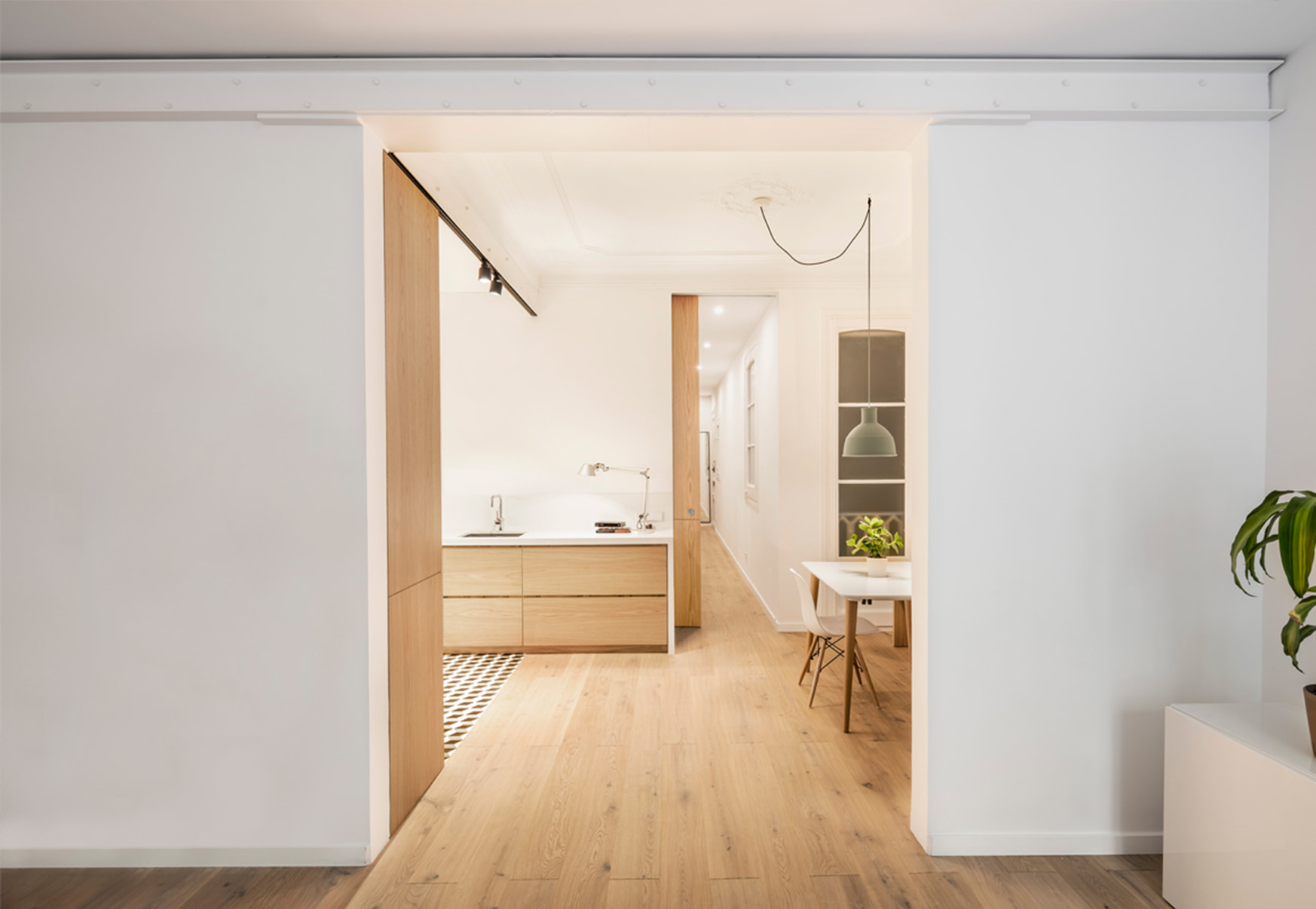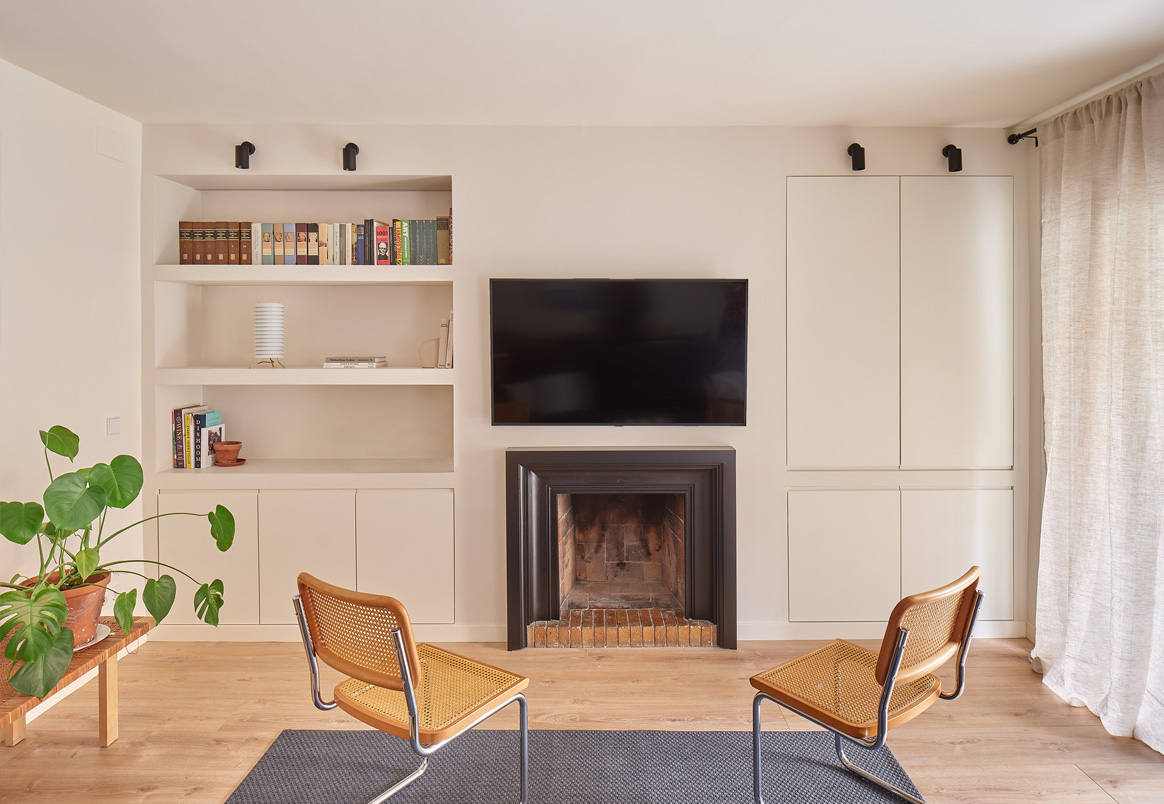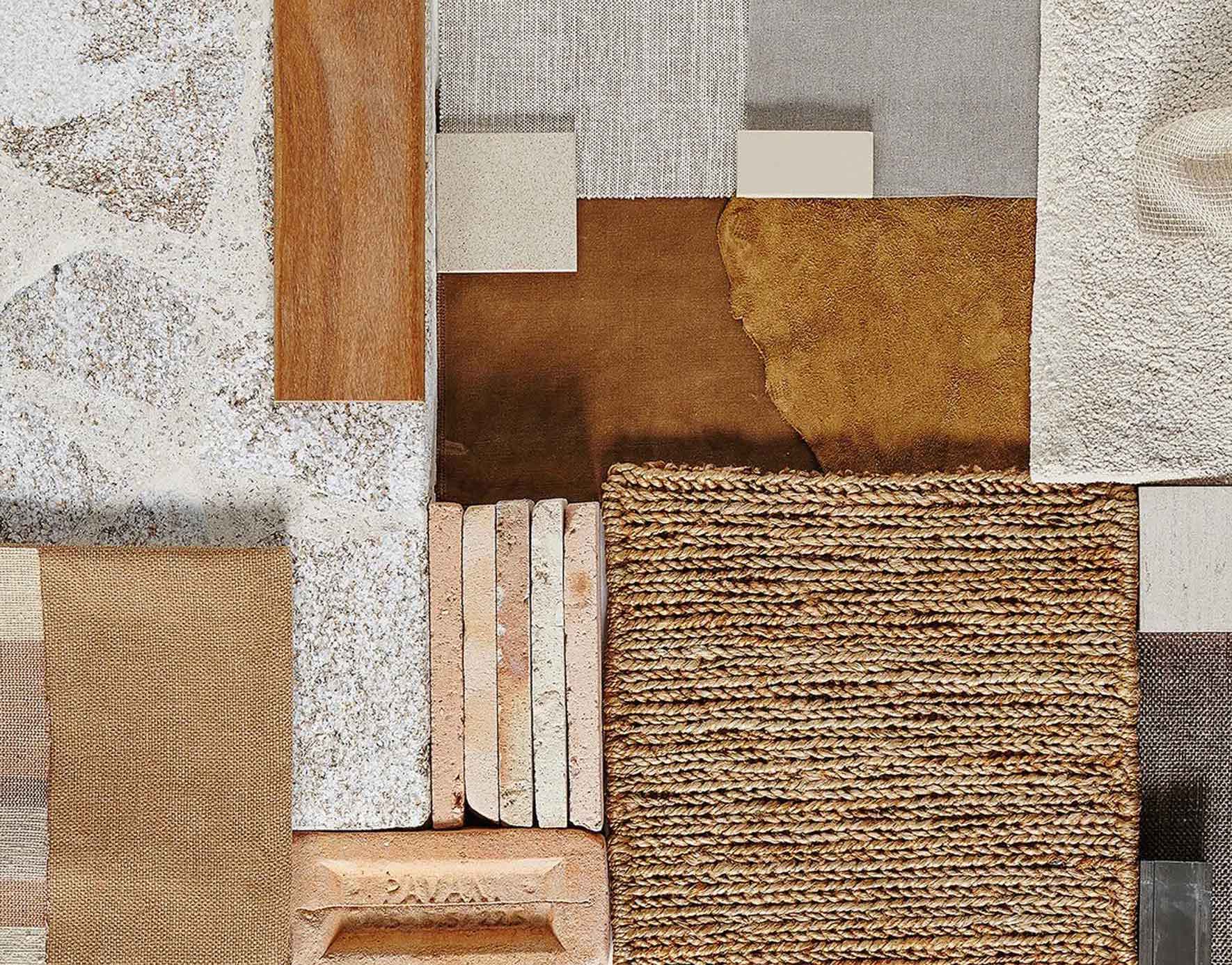
Natural materials vs. Imitation materials
When it comes to carrying out an architectural or interior design project, the choice of materials is a crucial decision. One of the most recurring debates we encounter revolves around whether to use authentic natural materials or resort to imitation alternatives. In this article, we will explore the keys to making a decision that fits your needs and preferences.

Healthiness
Natural materials like wood, stone, and marble are known to be healthier for the indoor environment of your home. They are biodegradable and generally do not emit harmful chemical substances into the indoor air. Imitation materials, on the other hand, are often made of plastics and PVC, which can release volatile organic compounds (VOCs) into the indoor air of the space.
There are no studies that can certify the harm caused by imitation materials, but it is not the same to live surrounded by plastics as it is by woods.
Aesthetics and realism
The beauty and authenticity of natural materials are undeniable. The texture, colors, and veins are hard to replicate. When it comes to imitation materials, although advances in technology have improved their appearance, they rarely can match the authenticity of natural materials.
When comparing a material in isolation, it can be confusing to determine which is the authentic one, but when multiple imitation materials are used in the same space, it becomes evident that they are not genuine materials. Natural materials bring a sense of warmth and authenticity to any space.
Maintenance and durability
This is the only point where imitation materials are better than natural ones. Natural materials may require more careful maintenance. For example, marble can stain, and wood can scratch, but with proper care, their beauty can last for generations. Imitation materials are often easier to maintain and clean. They are resistant to stains and scratches compared to their natural counterparts.
However, and although it may seem contradictory, the long-term durability of natural materials can be greater. This is because natural materials aesthetically absorb the passage of time and become lived-in spaces. Imitation materials, over time, can peel or have their color fade, leaving a lower-quality space.
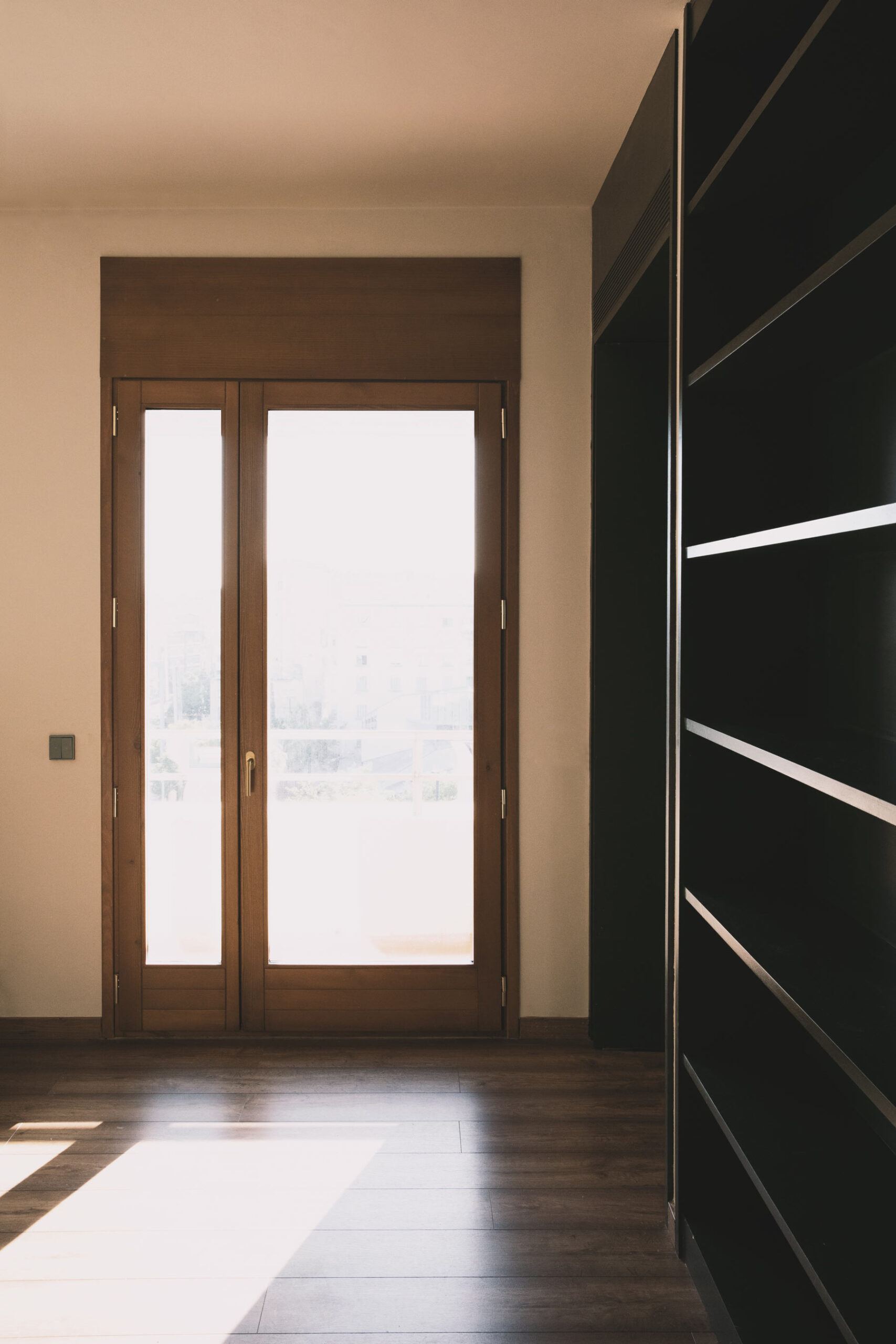
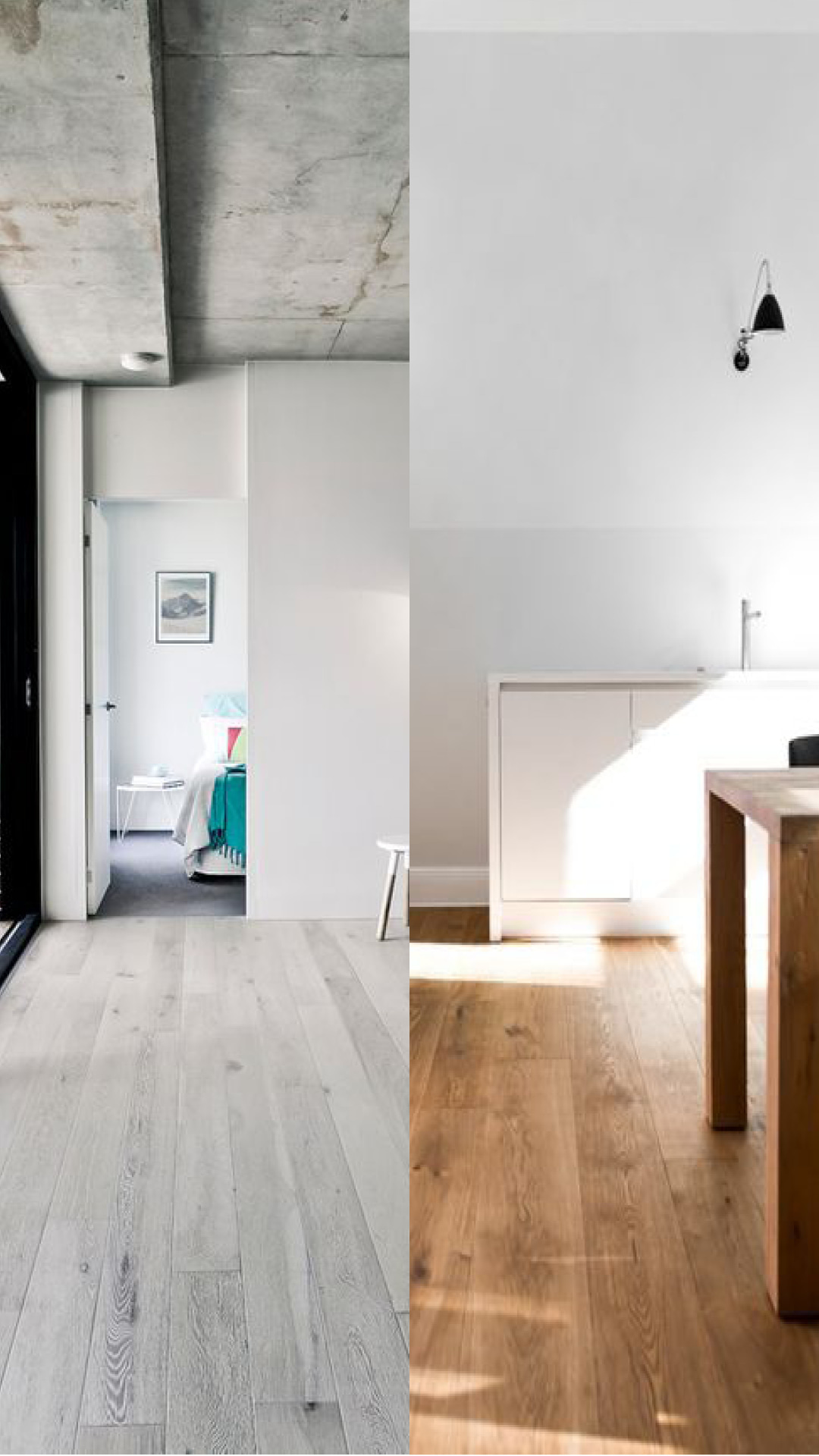
Typical comparisons between natural and imitation materials
Some common decisions in the choice of materials include:
- Natural parquet vs. Laminate parquet: This is a very important decision since the floor is a highly predominant surface in any home. It’s also a material we constantly touch since we often walk barefoot. The only advantage of laminate parquet is if it will undergo activities that require high resistance.
- Natural stone countertop vs. Imitation countertop: Natural marble is aesthetically stunning but requires more care, while imitation porcelain is more resistant but less authentic. If you cook a lot and don’t like to worry about the material absorbing stains, porcelain is recommended. You can read more details in this article on natural stone countertops.
- Wooden windows vs. Aluminum or PVC windows: Wooden windows are sculptural elements of a home, but being in contact with the exterior can experience more wear and tear than usual, which can affect the hermetic seal. Depending on the location of the home, we like to use aluminum frames that improve thermal and acoustic efficiency. We never use PVC frames, as they are thicker and less aesthetically pleasing.
Ultimately, the choice between natural and imitation materials will depend on your personal priorities and the specific needs of your project. Combining both types of materials in a design to leverage their respective strengths can be beneficial. But most importantly, the final aesthetics of the space should be perceived with natural materials; this will give the home a higher quality and feel.
Related projects

